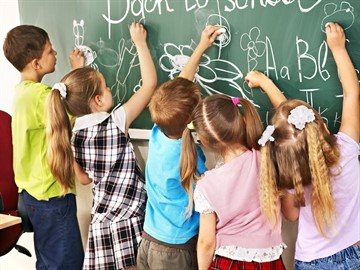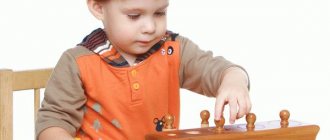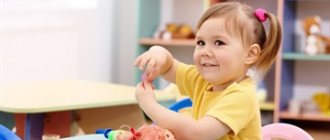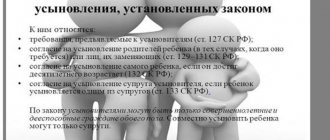Purpose and content
Children are the most defenseless in the harsh realities of the cruel modern world. It is with the aim of protecting this category of the planet’s population that special guardianship and trusteeship bodies have been created in each state.
Their powers/official responsibilities include constant monitoring of compliance with the rights of the child in the family, on the street, in educational and other social institutions. Characteristics help to collect and classify complete information about each young child or adolescent.
The document contains maximum information about such factors as:
- social adaptation of a young/minor child;
- the level of his intellectual and mental development;
- character traits, behavioral aspects, hobbies;
- level of material support;
- general psychological comfort of the given environment where the child resides.
Only a person who spends a long time with a minor during the day can provide the above information with a high level of reliability. For example, a class teacher at a school, a circle leader, a school psychologist or a social worker who has been observing the student’s behavior for a long time.
Sample characteristics for a supervised student (from the experience of a social teacher)
The motivation for educational activities aimed at obtaining new knowledge is weakly expressed. The existing intellectual abilities are not fully realized due to the systematic lack of parental control. Does not complete homework or does not complete it in full. There are absences from classes for no valid reason, and frequent tardiness. There are also cases when the child did not spend the night at home.
By character the child's name
friendly, active. Always polite both with adults and with peers. Complies with teacher requirements and rules of behavior in the classroom and school. He is respected in the class and values the opinion of the team. Reacts adequately to comments and criticism. There are no absences without good reason.
The results of observations of their health, academic performance, achievements in class and extracurricular life, and an examination of living conditions are reflected in the psychological and pedagogical characteristics of the child under their care. Data is updated annually. For so-called social orphans, it becomes necessary to write an additional reference for the student to the guardianship and trusteeship authorities with a recommendation to formalize guardianship or to the court in case of deprivation or restriction of parental rights.
You might be interested ==> Is Gypsum Dust Harmful to Humans?
The material provides a sample description of a student who is registered with the social and pedagogical service of the school. A feature of this characteristic is the tracking of positive changes in the same child during his studies in primary school. The characteristics describe the child’s educational successes and failures, his extracurricular activities, and the circumstances in which the child lives at school and at home. This development will be of interest to teachers in whose class there is a student with similar problems.
When is it necessary to provide a student’s reference to the Department of Guardianship and Trusteeship?
Requests for a complete description of the behavior and social development of a particular child come from the Department of Guardianship and Trusteeship in the following situations:

- if legal proceedings have been initiated regarding the deprivation of parental rights of the father or mother;
- when a police case has been opened against a child/minor, and the child is suspected of committing a criminal or other type of offense;
- if the child’s behavior is noticeably cruel, constant conflicts arise;
- when suicidal tendencies were noticed in the ward;
- if a request has been received to adopt a child, a reference is required for those wishing to adopt at their place of work/place of residence and other situations;
- all dysfunctional, low-income families are under constant control of the guardianship and trusteeship service, as a result of which children from such families must be provided with a complete profile at least once a year.
Social protection reference for a child from the class teacher
It is promoted by knowledge, openness, communication and freedom of thought, conscience and belief. Tolerance is harmony in diversity. The manifestation of tolerance, which is consonant with respect for human rights, does not mean tolerating social injustice, abandoning one’s own or yielding to other people’s beliefs. This means that everyone is free to hold their own beliefs and recognizes the same right for others. This means recognizing that people by nature differ in appearance, attitude, speech, behavior and values and have the right to live in the world and maintain their individuality. This also means that one person's views cannot be imposed on others. Tolerance is a structural component of personality and affects all essential spheres of a person. This quality of personality is a component of the humanistic orientation of the individual and is determined by his value attitude towards others. It represents an attitude toward a certain type of relationship, which manifests itself in a person’s personal actions. M.K. Mamardashvili believed that a personal action is something for which there is no need to indicate any reasons, which is not deducible from what is accepted in a given society, is not deducible and was not done because in a given culture such a skill was agreed upon to be considered, act, do.
Social-pedagogical activity also involves the so-called social hardening of children and adolescents, i.e. developing their ability to survive in difficult situations, not break down, and find ways to overcome difficulties while remaining a worthy person. And, finally, social and pedagogical activities should be aimed at the formation and development of moral orientations, moral consciousness, moral feelings, socially significant attitudes in life self-determination, and therefore the moral behavior of the child. As you know, a person lives in the external and internal world. The task of a social educator is to be able to fill the child’s inner world with meaning, spiritual, and moral content, to organize his understanding of current events, his place in this world and time. Another important task is to be able to manage the outside world and create a moral, educational environment in the microsociety. In his activities, the social teacher is guided by the following principles: natural and cultural conformity; humanization; subjectivity; taking the child for granted; personalization; personal approach; activity approach; integrated approach; systematic approach; acmeological approach; social adequacy; value orientations; compensation; confidentiality; protection; dialogicality, etc.
Mandatory subparagraphs
It is necessary to know the rules for writing characteristics, because... If they are violated, the document drawn up may have no legal force. The document consists of 3 parts.
In the upper right corner (or in the center of the sheet) indicate the personal data of the child for whom the characteristics are being compiled:
- Child's full name;
- place of study, class;
- date of birth, place of residence.
The next part of the document contains the following information:
- date the child entered school;
- the general level of knowledge at the beginning of studies and the acquired skills at the time of writing the characteristics, which subjects are more successfully mastered, what are the difficulties;
- features of thought processes, memory, attentiveness;
- level of health and physical activity;
- psychological adaptation in a team, relationships with peers, teachers;
- student motivation to study.
General reasonable conclusions and forecasts of the author's characteristics. Date/signature.
Dear readers! To solve your problem right now, get a free consultation
— contact the on-duty lawyer in the online chat on the right or call:
+7
— Moscow and region.
+7
— St. Petersburg and region.
8
- Other regions of the Russian Federation
You will not need to waste your time and nerves
- an experienced lawyer will take care of solving all your problems!
Characteristics of a lagging student
When describing a student who cannot cope with the program, emphasis should be placed on features that interfere with the assimilation of knowledge in full.
Characteristics of a 7th grade student
secondary school No. 76 Fatyanov Sergei
Sergey, born November 5, 2006, lives in Novosibirsk, village. Svetly, 2. Guardian - grandmother Fatyanova Maria Petrovna. Parents died in 2008. The boy has been studying at school for three years; before his grandmother’s guardianship was granted, he was in orphanage No. 45 in Berdsk. The stay in the shelter and the death of his parents, as well as the long period of registration of guardianship by his grandmother, left an imprint on Seryozha’s psychological state. The child is withdrawn, distrustful, and is influenced by the tragedy that has occurred. Difficult to socialize. The boy has poor school preparation. There are intellectual impairments. Has difficulty understanding assignments, has difficulty mastering the material, and requires repeated repetitions. When he comes into care, he tries to improve in all subjects and masters new learning skills. However, the existing neglect does not bring the desired results today. Academic performance is satisfactory, grades “4” only in drawing and sketching. Russian and foreign languages, literature, social studies are given with effort. There is motivation to study. However, there is no independence, he is afraid to answer publicly at the board. Has a weak memory, learned material is quickly forgotten. Sergey is a sympathetic, kind boy. However, he is reserved with classmates and is emotionally closed. He does not like to carry out public assignments, trying to stay aloof. At the same time, the boy tries to adapt to new conditions, listens to his grandmother, and is very afraid of returning to a government institution. In 2021, I visited a social educator and psychologist.
School director ______________________________ S.P. Tolkova Class teacher: ___________________ G.Kh Semenova
Features characteristics for children of primary school and high school students
Both in relation to a written characteristic for a child of primary school, and when writing a characteristic for a high school student, the emphasis is on the level of existing knowledge, learning indicators, and the student’s capabilities/abilities.
Regardless of the student’s age, the characteristic necessarily specifies his psycho-social adaptation: conflicts, mood, behavioral factors, etc.
For a child (primary school student), it is recommended to describe the play activities in which the child participates:

- the nature of his gaming interests (varied or the same type, non-specific or standard, stable or short-term);
- what kind of game plan does the child choose (manipulative, procedural, plot, role-playing themes);
- what kind of gaming behavior is typical (initiative or passive, prefers to play alone or strives for company, is more selfish or has a tendency towards altruism in behavior with peers;
- strives for command and chooses leading roles or is content and feels more comfortable in the second and third places.
Such a report of the student’s behavior will make it possible to clearly trace his socialization and make the necessary adjustments.
Expert opinion
Maria Lokshina
Family law expert since 2010
When compiling a profile for a teenager (i.e., a high school student), more attention should be paid to his activities and hobbies, because It is in this period of life that the foundations of his professional adaptation are laid.
Of course, issues of communication, intellectual, emotional, social lability, psychological stability are important sub-points in the process of crystallization of the real image of a teenager. You shouldn't miss them. Below is an example of a reference for a junior school student to the guardianship and trusteeship authorities.
Characteristics for guardianship authorities
______________________________________ is characterized as a disciplined and responsible student who always completes his homework conscientiously. During his studies, he demonstrates average abilities and average motivation to learn. In subjects he has a “satisfactory” rating. He does not assimilate the educational material well, although it is clear that he is trying and showing curiosity.
You may like => Calculate Alimony With Gender Rates
Sergei is a balanced, calm, friendly character, always ready to help a friend. Shows respect for teachers, does not violate the internal rules of the educational institution, goes to classes on time, rarely misses classes without a good reason, does not violate discipline during lessons and breaks, reacts adequately to comments from adults and peers, and does not show aggression.
Emotional, lively, sociable, disciplined, lately she has been reacting aggressively to teachers’ comments and not fulfilling their demands. Has many friends among his peers. A developed sense of collectivism, camaraderie, a sense of duty, and decency. A case of alcohol consumption was noticed (according to the parents). The girl maintains relationships with older boys.
This characteristic of a 6th grade student reflects such traits as responsibility, attentiveness, respect for elders, and good relationships with classmates. It is rather a positive characteristic, despite the student’s poor academic performance. This characteristic also shows the role of the guardian in the upbringing, education and life of the girl.
Sample
Characteristics of the student (class/school)
(child’s first name, patronymic),
residing at:
at the request of the guardianship and trusteeship department
year, day, month.
(Child's name) came to first grade in September 2012. Social adaptation in the class was difficult, communication with children was not easy, the boy was quite complex and avoided active participation in any event (it doesn’t matter whether it was a social assignment or a game).
At the beginning of training, a high level of cognitive processes was revealed. Humanitarian subjects (literature, social studies, etc.) are of particular interest. Loves to draw, look at pictures, listen to fairy tales, stories, music.
The vocabulary is small (perhaps due to infrequent communication with peers). There is inattention and absent-mindedness in behavior, especially if the child does not like the topic of the lesson.
The general level of memorization is average, there are the makings of logical perception, and the figurative type of thinking is well developed.
The boy is friendly by nature and willingly responds to requests. (child's name) has not yet taken a particularly active part in the life of the class. According to the results of sociometry, the child is not a leader, but also does not have a tendency to obey. Listens to the opinions of teachers and parents. The prevailing mood is good.
The school psychologist conducted a diagnosis of intra-family relationships, which gave the following results: the child’s subjective assessment of his family is positive, the child feels more trust in his mother, the relationship with his father is complex. The reason is that the boy’s father is not his own. The presence of negative feelings towards this person is clearly visible in the boy’s conversations and drawings - the child deliberately excluded him from his own inner world. He has not yet determined his place in the family; he is passive and quiet in all relationships with all family members.
During testing (child's name) was in satisfactory psychological and physical condition, without additional tension and overwork.
Date of compilation Class teacher: Full name __________
Teacher-psychologist: Full name ____________
A sample reference for a child to the guardianship authorities from the school is available.
What documents are needed to apply for child benefits?
- Application for payment of a lump sum benefit;
- Certificate of birth of a child from the registry office in form F24 (issued at the time of registration of the child);
- Parents' passports and copies thereof;
- Child's birth certificate: original and copy;
- If there is a second parent, then a certificate from the place of study or work of the second parent stating that this type of benefit has not previously been paid.
- An extract from the work book about the last place of work or service;
- A copy of the order from the last place of work regarding dismissal from the position;
- If maternity benefits were issued, it is necessary to provide a calculation of this benefit;
- Certificate of family composition;
- Calculation of average earnings;
Read more about applying for monthly care benefits through Social Security.
We recommend reading: Benefits for pensioners of the Ministry of Internal Affairs on suburban railway transport in the Nizhny Novgorod region







